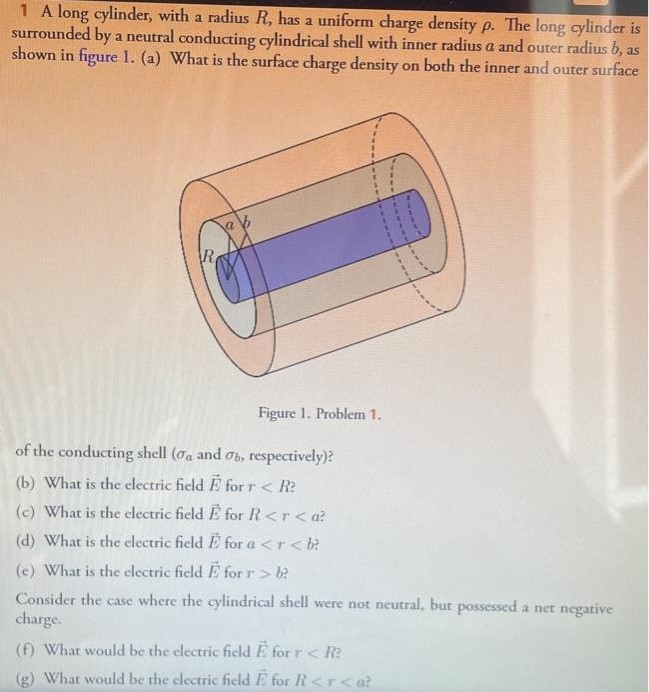1 A long cylinder, with a radius R, has a uniform charge density ρ. The long cylinder is surrounded by a neutral conducting cylindrical shell with inner radius a and outer radius b, as shown in figure 1. (a) What is the surface charge density on both the inner and outer surface Figure 1. Problem 1. of the conducting shell ( σa and σb, respectively)? (b) What is the electric field E→ for r
